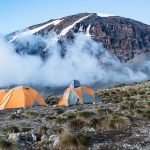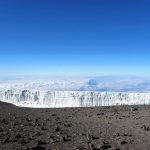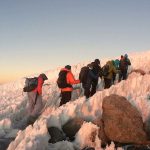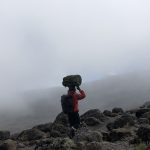BEST ROUTE TO CLIMB KILIMANJARO?
Which is the best route to climb Kilimanjaro?
There are 7 main Mount Kilimanjaro routes that lead to the summit, Uhuru Peak, one of which starts on the Northern side of the mountain and the rest on the Southern side. After making the decision to climb Kilimanjaro, you’ll need to choose your route.
- Northern Circuit Route
- Lemosho Route
- Shira Route
- Machame Route (“Whiskey” Route)
- Rongai Route
- Marangu Route (“Coca-Cola” Route)
- Umbwe Route
The one question we are asked more often than any other is “which is the best route to climb Kilimanjaro”. And the answer depends on what you want. Here are our winners
If you want the highest chance of summiting the best route to climb Kilimanjaro is the Lemosho route and Machame route over 7 or 8 days – excellent acclimatization and an easier summit night make these winners by a long way. And as reaching the top is the most important thing for most of our climbers we make this our overall winner as the best route to climb Kilimanjaro.
The Lemosho route approaching from the West wins hands down for the best views with spectacular vistas in all directions.
If keeping away from the crowds is your top priority the Rongai route has to be your choice as the best route for your Kilimanjaro climb. But be warned the success rate is lower.
If you are looking for an adventure and a really unique wilderness experience the crater camp option is the best route to climb Kilimanjaro for you- less than 1 % of climbers get to do this and all our climbers who do it rave about it.
Which route is best to climb Kilimanjaro?
When you are planning your Kilimanjaro climb there are 6 factors that you need to take into consideration in deciding which is the best route to climb Kilimanjaro for you.
- Acclimatization
- The difficulty of the summit night
- How busy the route is
- What are the accommodation options
- Safety
- What is the success rate
When climbing to altitude the golden rule is to walk high and sleep low. Following this rule minimizes the risk of altitude sickness and improves your chance of summiting. The best routes to climb Kilimanjaro for acclimatization are the Machame and Lemosho routes as these naturally allow you to walk high and sleep low.
The toughest summit nights are on the Rongai route and the Marangu route: they reach the crater rim of Kilimanjaro on the North, opposite Uhuru Peak and more than 2 hours from the summit itself. The best routes to climb Kilimanjaro to avoid this are the Machame and Lemosho routes as they reach the crater at Stellar point less than an hour’s walk from the summit. An extra hour on what is already a very long day is often the straw that breaks the camel’s back.
The amount of climbers on the mountain varies a lot depending on the season and on the day of the week but even taking this into account if you want to have the mountain more to yourself the best route to climb Kilimanjaro is the Rongai route. This route starts in the North and is used by a lot fewer climbers than the very popular southern routes.
The only route that you do not have to camp on is the Marangu route so if you hate tents this is the best route to climb Kilimanjaro for you. Be warned though the huts are very basic and noisy.
We consider all of the routes except the Arrow Point route to be relatively safe if walked sensibly. We do not offer climbs on the Arrow Point route as the risk of falling rock is unmanageable. This is definitely not the best route to climb Kilimanjaro.
Creating tailor-made tours for over 10 years
Due to Tanzania’s close proximity to the equator, we generally only have two seasons; a rainy season and dry season. Short rainy season is from November to January and long rainy season is March through May. Dry season usually starts from July to October.
Majority of people will suggest that the best time to visit Tanzania is between July to October. This is the dry season, means that animals wandering searching for water, which makes them relatively easy to spot. You will probably see them in large concentrations as the watering points and rivers are getting limited. Most of the water’s sources dry up or get smaller during the dry season. However because most people believe that July to October is the best time to come, it is also the busiest time in the national parks. This means that majority of people miss the hidden treasures that can be found at other times of the year.
Here is a short overview of what the year looks like in our National Parks.
Ideas and travel guides for exploring Tanzania
High Season
- From June to October
- It is the dry season
- Climate: Dry and warm, although there is short rains between August and September
- Higher rates applied Great Migration Mara River crossing
Recommended Itineraries
- Great Migration River Crossing
- Kilimanjaro and Safari adventure
- Cultural and Great Migration experience
- Serengeti Migration and Zanzibar
- Kenya and Tanzania Game Safari
- Tanzania Camping Safari
Mid Season
- From November to February
- It is the short rains season
- Climate: Short rains, hot and dry in some days
- Average rates applied
- Great Migration Southern Serengeti (Calving Season)
Recommended Itineraries
- Special Green Season
- Wildebeest Migration and Cultural Safari
- Tanzania Signature Safari
- Tanzania Luxury Safari
- Tanzania Safari Adventure
Low Season
- From March to May
- Long rain season
- Climate: Rainy days, occasionally warm
- Lower rates applied
- Great Migration safari Southern to central Serengeti
Recommended Itineraries
- Special Green Season
- Tanzania Highlights Safari
- Wildebeest Migration and Cultural Safari



